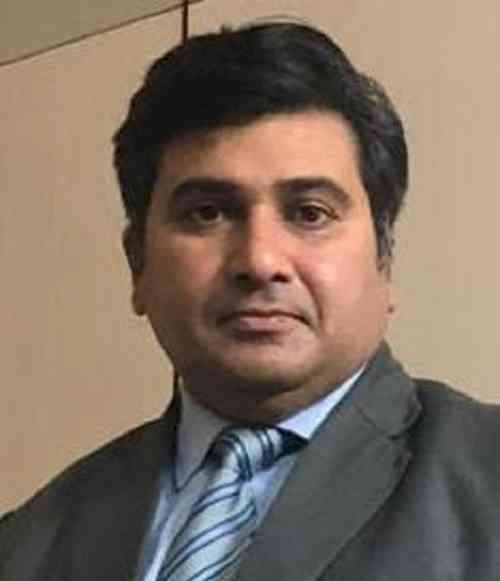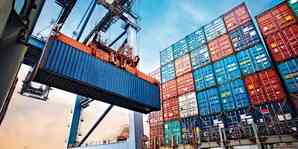AITF study report on how to tackle China in domestic and international market
It says India is capable enough to put a dent in Chinese international trade share

Ludhiana: All Industries and Trade Forum (AITF) national president Badish Jindal has written to Prime Minister Narendra Modi mentioning about its study report on how to tackle China in domestic and international market. It has stated that India is capable enough to put a dent in Chinese international trade share.
In its representation sent to Prime Minister the AITF has stated that the Chinese dragon is not only challenging India’s sovereignty but also proving a big hurdle in India’s economic prosperity. Post Covid may prove to be a blessing for India in International trade as the India may get preference as compared to china in USA and other economies.
The study of AITF confirms that we are not much behind China on economic front. The volume of their trade is higher just due to a few aspects which can be corrected very easily by India. There is a dire need to form a long term Industrial & Exim policy to boost the morale of the Indian manufacturers.
In India Industry contributes 27% of the GDP whereas in China the contribution of Industry to the GDP is 39%. The contribution of agriculture in Chinese GDP is 7.1% and India agriculture contributes 15%. The service sector figures are almost same in both the economies. So, efforts shall be made to increase the industrial growth in India.
China’s total export is around 2.5 Trillion $ as compared to India’s export of 322 Billion $. In this whole export scenario China exports mobile phones of 125 Billion $ which contributes 46.9% of total mobile exports, whereas India exports 3.2 Billion $ of mobile with a contribution of 1.2% of total mobile exports. In China’s tally of export of electrical machinery equipment is 671 Billion $ (26.9%), Machinery Including Computers 417 Billion $ (16.7%), Furniture Lightning 99.5 Billion $, Plastic & Plastic articles 84.4 Billion $ & Vehicles around 74.4 Billion $.
Whereas if we compare the Indian Exports the top exports are Mineral Fuels 44.1 Billion $ (13.7%) Gems & Precious Metals 36.7 Billion $ (11.4%) Machinery Including Computers 21.2 Billion $ (6.6%). Organic Chemicals 18.3 Billion $ (5.7%). Vehicles 17.2 Billion $ (5.3%) and Pharmaceuticals 16.1 Billion $ (5%).
So more or less India is exporting the raw materials and China is exporting the value added manufacturing goods. The equation can be changed very easily. The trade deficit of India stands at 159 Billion $ whereas China secures trade surplus of 422 Billion $. So the total trade imbalance difference of both the countries is merely 581 Billion $.
Presently, in bilateral trade between India and China India exports around 1.17 Lakh crores of products which includes 20031 Crore rupees of mineral fuels, 22760 Crores rupees of Organic Chemicals and 12444 Crore Rupees of Cotton. Whereas in the 4.92 Lakh crores of Imports from China, India is importing Electrical & Machinery 1.84 Lakh Crores, Garment sector (yarn and made ups) 16500 Crores, Ceramic & Glassware 5898 Crores, Plastic Parts 15250 crores, Leather Goods & Footwear: 5255 crores , Furniture : 7737 crores.
India is playing very defensive in tackling the Chinese imports with the slogan of Atam Nirbhar; but beside domestic India must play offensive to compete China in International trade too. In the total Chinese exports of 2.5 Trillion $, India can easily replace a share of 20% of China in International market. In the bilateral trade India must endeavour to cut down the imports by 50% so as to decrease the trade imbalance as much as possible.
Jindal has further mentioned that, as per studies India leads the China in many aspects, a few among these are as under:
Minimum Wages: As per study of All Industries & Trade Forum, India is having low cost cheap man power as compared to China. The minimum wages in China is around 360$ whereas in India pays 160$ average wages to the workers. This can prove to be a cost cutting for Indian industries and India can also convince the Foreign Investors about this aspect.
Power Cost: In China power cost is around 7 Rs a unit to Business and Industries which is almost similar to average Industrial tariff. Many states in India are subsidizing power to Industries for bringing more investments in their states.
Steel Prices: Presently the Prices of Steel are bit lower in India as compared to China. In China the Prices are around 530$ whereas In India the present prices are 510$ a ton. In alloy steel the Chinese steel consumers have an edge with low value addition by steel manufacturers of China. Whereas Indian companies charge high for the alloy grade steel in India.
Plastic Prices: Both the countries have a similar plastic price which is around 70Rs to 80Rs per kg for PP.
Cotton Prices: India is having an edge on cotton prices as in China the prices are 130 to 140 a kg whereas the prices in India are around 106 a Kg. This can help in tackling the international garment exports. Indian can also compete with Bangladesh and Vietnam in international market.
Freight Cost: The difference between oil prices in India and China is merely 25%. So the freight cost is almost same in both the economies. India is having better rail network which can help India manufacturers in better & cheap connectivity.
India have a huge potential to counter China in international trade, the government of India must endeavour as under to boost the manufacturing sector of India.
CLCSS to be converted into low cost interest for buying technology: The government shall replace the CLCSS with low cost funds to buy new technology for industries. This will be more simplified process to procure new machines. With the similar subsidies budget the government can bring a revolution in Indian manufacturing sector.
1% of GDP should be invested on research and development: Government requires enhancing the size of financial support to research and development. Atleast 1% of the GDP should be invested on research and development in India. This may multiply the benefits in terms of export and GDP.
Lower rate of finance: The Chinese industries have a big edge of lower lending rates. The funds are available in China between 2.5% to 3.5% for the business loans whereas in India the funds are available at very high rates from 8% to 12%. This is creating a major trouble in acquiring the new technologies. The government requires bringing down deposit rates sharply to enable banks to lend money to Industries at lower prices. With the lower rate of interest the more investments will come in economy by depositors and borrowers.
Curtail the unwanted imports: Government must curtail the unwanted imports from China, the products such as plastic goods, Bicycles, Fasteners, Steel, Toys, Locks, Hand tools, power tools, Garments & accessories , Electricals, Confectionary, Oils, and certain machineries can be easily manufactured in India. There is a dire need to put a ban on the imports of all such goods which Indian manufacturers can manufacture in India.
The restriction of Import will bring the Investment: India is one of the biggest consumer markets of the world. The restriction of Import will surely bring the Investment and no manufacturing company can ignore the potential of India’s buying capacity. The best example could be the tyres as the ban may force the manufacturing units to open their units in India. Similarly in the field of mobiles and computers the manufacturers will start showing interest in case of any strict provisions of imports in India.
Misuse of SAFTA & Other FTA’s: Beside China India must check the SAFTA & other FTA countries such as Vietnam, Hongkong, Singapore, Indonesia, Thailand, Bangladesh, Srilanka, etc. The Chinese companies are setting up their units in these countries to save duties.
Not only in exports to India, The China is taking the full advantage of under developed nations for saving custom duties and to avoid trade restrictions. These countries are developing as hub of exports by putting a dent on Indian international trade. India must approach the WTO to save Indian manufacturing units by requesting to impose the parallel duties to these countries as compared to developing countries. The nexus of China with these countries requires to be unearthed by collecting the data of import and exports of these countries.
India must represent in WTO the example of Vietnam that Vietnam exports around 274 B$ and imports stands at 253B$. The Vietnam exports is very near to the figures of Indian exports and there is merely a gap of 48B$ between both the nations. The per capita export of Vietnam is 2860$ whereas the per capita exports of India is 241$. Even then these countries got preferential status by WTO.
Stop freebees & MNREGA for more Industrial Manpower: The freebees are not only a burden on financial health of India but also a big challenge for Industry. Due to MNREGA the quality labour wishes to stay at their native places. This also hinders their skill development and creates labour scarcity in Industries. The cheap food schemes should only be for the old age people, widows, kids, orphans, and differently able people whereas the working force shall work in Industries or should be encouraged for startups.
Gap in data of Unemployment: The Industries in cities have lack of manpower but as per statics the India is having high unemployment rate. The unemployment rate is more in professional employees as compare to Industrial work force. But the data shows high unemployment rates in Industrial worker population. In India there is a high demand of drivers, electricians, plumbers but the collages are busy in preparing millions of MBA graduates every year in India.
Curb on raw material export: The government must ban the export of raw materials such as iron ore , cotton and other ores. Efforts should be done to establish manufacturing facilities in India for value additions.
Tackling delayed payment: With the limited finances, the delayed payments are big concern for Industries. The policy should be very strict in this regard. The delayed payment act requires teeth to make it more affective. Beside MSME’s all industries and commercial sector should be covered in this act.
Undeveloped 4th tare sector : The forth tare in India which is 70% of the countries Industries by number are fully underdeveloped. The sector requires handholding support in terms of finance and technology. These industries shall be developed with the cluster based approach.
Zero tolerance policy against corruption & Right to service act : corruption is one of the main reason for slow economic performance in India. People avoid investing in Industries and preferred to invest in securities and shares. The effective single window clearance and zero corruption will boost the Industries in country.
India must follow the foot prints of China to replace it in domestic and international market
Chinese Policy for Technology Up gradation:
Unprecedented number of national policies was issued by China to develop the infant industry into the largest worldwide. The policies set specific output and capacity goals and as such involved a mix of production, investment, and firm entry subsidies. Production subsidies included input material and export credits, buyer financing, and so on. Investment subsidies took the form of low-interest long-term loans and expedited capital depreciation. Finally, reduced processing time and simplified licensing procedures, as well as heavily subsidized land prices.
The Chinese government is playing a greater role in formulating strategy, increase research and development subsidies for technology companies, and offering those firms the support for intellectual property rights.
The Chinese government is giving full financial support in Basic research and development .The government is strengthening the strategic guidance at the national level, devoting more resources to achieving a breakthrough in core technologies, and creates a market environment.
China believes in showcasing its strengths and presenting itself as a model to visiting dignitaries. This helped funnel foreign direct investment into the country and develop the local economy. Shenzhen and Zhangjiagang were developed into amazing models so that the surrounding area could be sold as an investment property to foreign investors. No doubt this helped improve the image of China, making it as an attractive investment country.
China has successfully created several flexible investment zones, free trade zones, high tech zones, and export processing zones, along with tax incentives and proper infrastructure. They score over other countries in factors like speedy approval of investment proposals and building of solid infrastructure.
China has made committed overtures towards its non-resident citizens who are economically positioned to invest heavily on the country. As a result of this, the 60 million people of Chinese origin who live outside contribute to the country’s economy in the form of investments and remittances. Non-resident Chinese are respected and allowed to participate in the socio-economic activities of the mainland. Southern China has been able to flourish due to the efforts of these non-resident Chinese.
China has been able to make quick turns in strategy and redirect its resources into computer science, biotechnological engineering, law, economics, management, and higher education. The country’s policies regarding studying abroad are flexible, permissive and supportive, and incentivize strong graduates to return to China.
India just needs to initiate the replacement of China in domestic and international market. The industries need just a little support from the government to achieve all the given targets.
Concluding, Jindal has stated that, “We ardently hope that our request would get your kind confederation and would be treated accordingly.”


 cityairnews
cityairnews 








